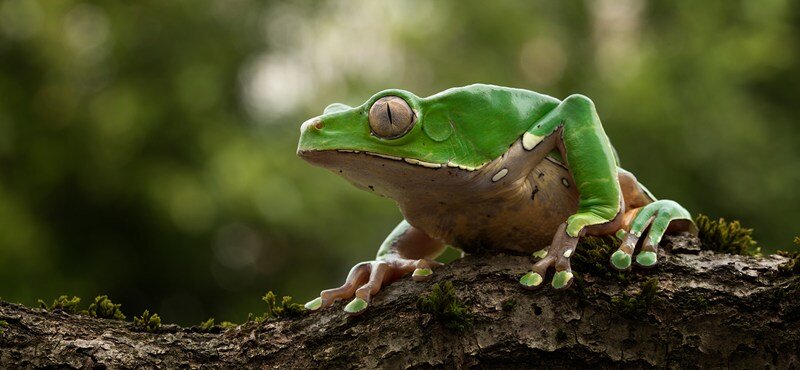
Origins & Science of Kambo
THE ORIGINS OF KAMBO
Kambo is the name of the secretion that is used as a medicine and it comes from the Phyllomedusa Bicolor, or "Giant Monkey” frog, originating from the Upper Amazonian rainforest. Phyllo means ''leaf” and medusa means “guardian".
The Kambo frog can grow as large as 12 cm. It is nocturnal and has few known predators. The biggest threat to Kambo is the rate of destruction to the habitat in which they reside.
It is a complicated and heavily debated topic as to which tribe owns the origins of Kambo. The discussion relates largely to who should profit from the widespread growth in the use of this medicine.
There are many indigenous people who have legends of Kambo and the history of its use as medicine. It is a medicine for many people, including Kaxinawa’, Yawanawa, Matses, Katukina, Mayoruana, Nukini, Kulina, Amahuaca, and Mayoruna Amazonian tribal groups.
A French priest, Father Constantine Tastein, was the first to document the use of Kambo in 1925 when studying the Kaxinawa’ tribe in Brazil. Afterward, reports of use within the Mayoruna tribe in the 1980s came from Katherine Milton, an American Anthropologist. Shortly followed by Peter Gormon, who gave detailed documentation of his encounters with the Matses tribe use of Kambo in his book “Sapo in My Soul”.
Just as there are many legends of Kambo, there are many ways of receiving and applying Kambo. There are rituals and traditions as well as use that does not include ritual or tradition. Kambo is a medicine for many people, and it is not just connected to Shamanism.
The growth in popularity of use beyond the Amazonian regions began in the 1990s. As of now, the only written restriction of Kambo in the world comes from Brazil in 2004. This restriction prohibits the advertising of any medicinal and therapeutic benefits of Kambo.
KAMBO SCIENCE
Scientific research on the secretion of Phyllomedusa bicolor started in the 1980s. Nominee of the Nobel Prize, scientist Vittorio Erspamer of the University of Rome wrote that the secretion contains a ‘fantastic chemical cocktail with potential medical applications, unequaled by any other amphibian’.
‘Kambo contains a unique and complex mix of bioactive peptides which trigger chemical reactions in the human body.
Some of these peptides have been found to contribute to heightened sensory perception, increased stamina, increased physical strength, and in general, enhance the capacity to manage pain and stressful situations.
The properties of the peptides found in Kambo cover a wide range of potential medical uses: treatment of brain diseases such as Alzheimer’s and Parkinson’s, depression, migraines, blood circulation problems, vascular insufficiency, organ diseases, skin and eyes issues, fertility problems, AIDS, hepatitis and cancer’.
The peptides in Kambo are some of the strongest natural antibiotics and anesthetics found in the world. Kambo applications have short and long-term effects. Short-term, some of the effects are a heightened state of alertness, good mood, enhanced resistance to tiredness, hunger and thirst, the capacity to easily concentrate and focus, and a still mind which can last for several days or weeks. Long term, Kambo has been reported to empower the immune system, overcomes fatigue, and improves one’s state of wellness.
The peptide families found in Kambo, are as follows:
Bradykinins (phyllokinin)
Tachykinins (phyllomedusa)
Cerulean
Sauvagine
Tryptophyllins
Dermorphins
Deltorphins
Bombesins
Andenoregulin
